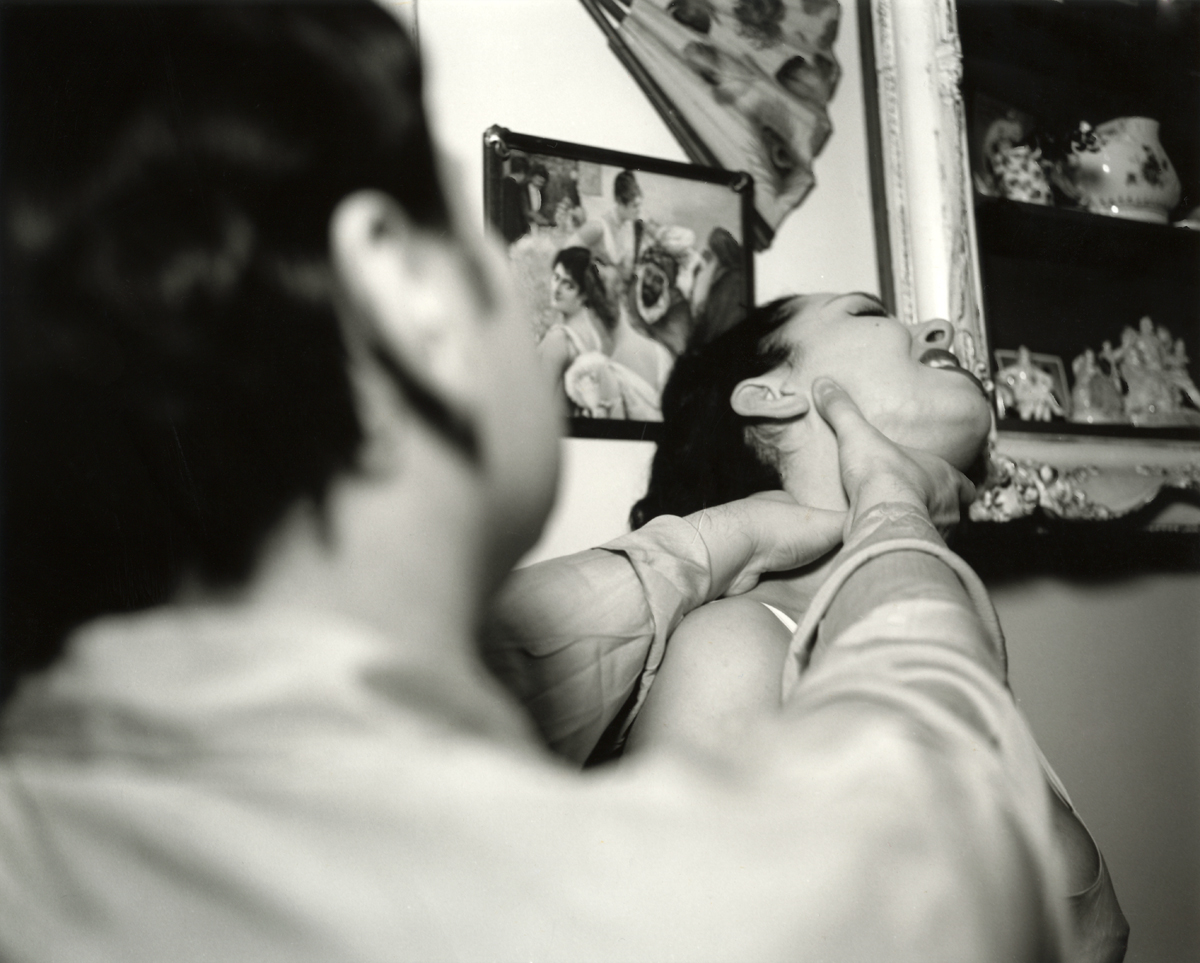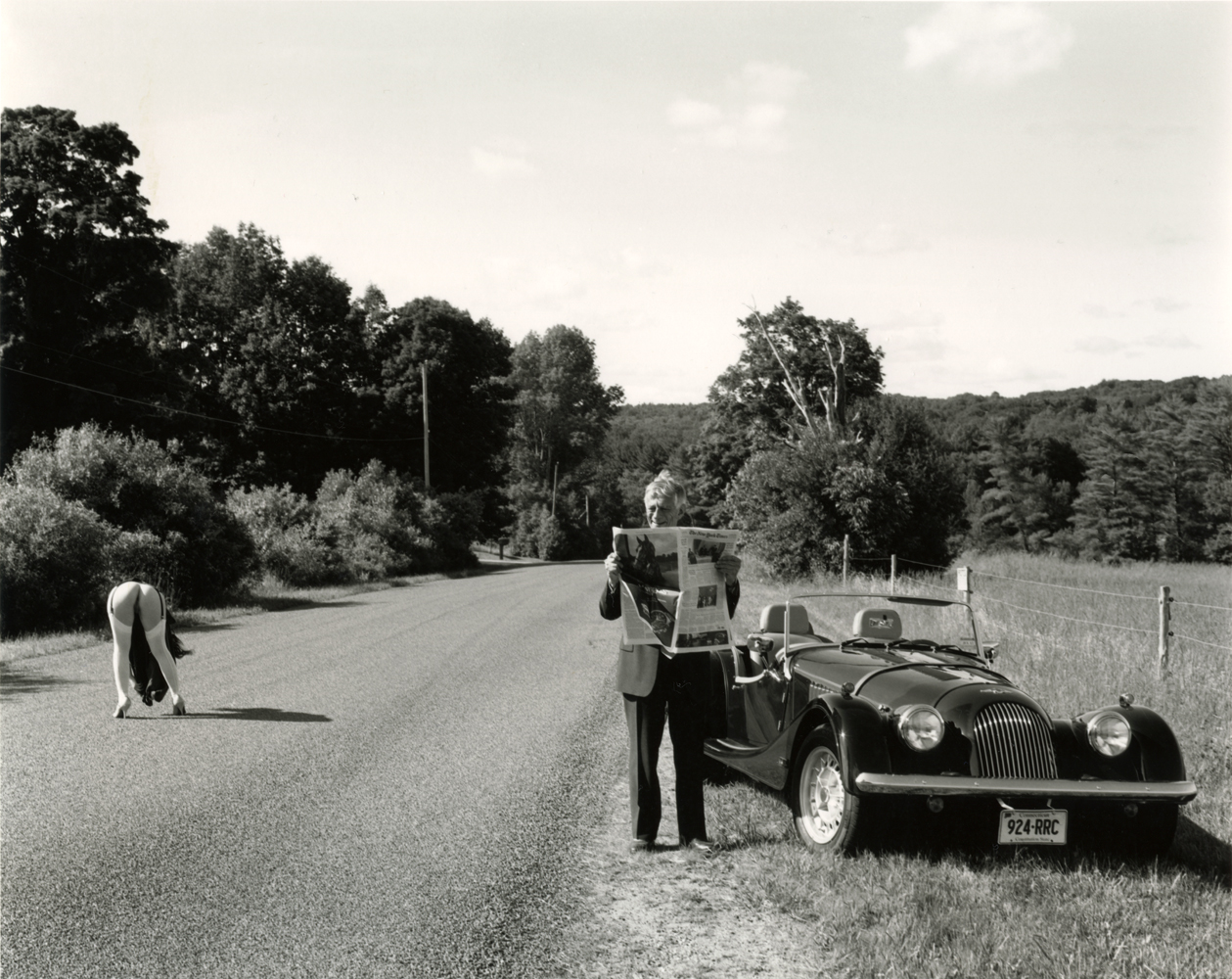By Julian Lucas
I had the opportunity to interview photographer Brittany Markert. Brittany describes her work as an ongoing narrative of one story. Intrigued, we wanted to examine and learn about her creative process.
How did you get started in the world of photography? What intrigued you about this medium? Describe your creative process.
It's in my blood. There was always a tripod and camera out during my childhood, my mother filmed everything. She handed down her analog cameras to me, as well as my grandfather, but still I didn't have the desire to take pictures. It all came together at twenty four, when living in a cockroach infested apartment in China. Alone and detached from the world, I had the epiphany that I needed to take pictures. For years I had strong, and mostly terrifying visions when walking by locations. I would meet people and imagine them as characters, imagine scenes they could act out. Most of reality disinterested me so creating my own visual world helped. I wanted to make films (still do) but photography seemed like an easier solution. I've also come to like photography more because the narrative is ongoing. I like the idea that my narrative can evolve for 40 years and not need one finalized script. The day I took a sketch on a diary page and turned it into an image captured on film felt like God opened a hole in the clouds and sent a beam of light through my brain. I'm not religious, but the symbology gets the point across.
This is very much how my creative process works too. I have visions, I overhear stories, I read something interesting and I write and draw them in my journals. Later, when the universe aligns, I try to bring these ideas to life.
Have any of your current projects been influenced by your past work?
“In Rooms' began as a visual diary in 2011 and has taken the form of an ongoing narrative in 2014. Like life, it's an evolving project.
Yes that project is profound! In Rooms seems to tell many stories. Is it an ongoing story with many chapters or is it many stories with short chapters?
This strikes me as a philosophical discussion I think about often. I contemplate if we live multiple lives in short chapters, if we live many short stories, or even if we live multiple lives simultaneously in long chapters. Exhausting. This must reflect in my work. I tell myself that my work is an ongoing narrative of one story and I very carefully edit it to work around this idea. I've surrendered my flesh, emotion and intellect as a character “In Rooms”; the work is her story.
We all know sex can be a driving force for all mankind. Explain your focus of the eroticism in your images.
Yes, I like to think that curiosity, most often related to eroticism and death, is one of the largest driving forces of humanity. In my early adolescent years, I took an interest in horror films. My supportive mother helped curate my introduction to this genre, having me watch Jaws, Halloween and The Exorcist, for starters. I became conscious of the use of sex, flesh, and death to heighten the senses of viewers. My attraction to this state achieved in horror films, a combination of arousal and disgust, is not something I understand at a conscious level. Then there is my deep interest in romantic and erotic novels, the satisfaction and excitement of imagining the building tension between two people right before they kiss or engage in physical activity. I'll leave it for the psychoanalysts to unravel.
What do you find alluring about capturing the nude and capturing nude self portraits?
Think of all the men and women in suits on Wall Street, the many business meetings they have throughout the week. The politeness, the tension, the facade they work under -- wouldn't it all be more human if they met in the nude? Granted you don't want to see everyone naked, besides the point. I wonder if we all live with this tension of meeting people and wondering what they look like naked, wondering 'who they really are'? I've created a world, this bubble, “In Rooms”, where you can walk into a space and strip your clothes, strip your masks and bear it all; there is nothing to hide In Rooms. I much prefer to build relationships and contemplate the human existence this way.
Nude also seems natural to me. Ask anyone that's been over to my house and they will tell you I don't wear clothing. I wear silk robes to be polite walking around with roommates, but that's it. I love clothing, but I don't have many pieces I want to remember in pictures. I am lucky to work with many people that have inspiring objects and articles of clothing. When I see something of theirsI like, I enjoy adding it to my images.
Self portraits (nude or not) are alluring because I have ultimate control and freedom. As a a visual storyteller and thinking of my work as a diary, it seems natural and more raw to include myself in it through self portraits. For awhile I thought my self portraits always turned out better, but lately I think I'm getting better at directing other people so I don't physically have to be in the image.
How has your photography evolved from your early works to the present day?
Sometimes hard to believe, but there was a specific day, December 17, 2013, on which my work changed drastically. On this night, I used my newly acquired Pentax 67 for the first time. Under the guidance of my mentor, friend and collaborator, Todd Hido, I took his portrait. I could finally see.
In what felt like creative euphoria that night, I became conscious of my narrative and how people would participate in my work. This changed everything. I consider images before this date 'early'. During that period I focused heavily on light and mood (I still do) but I wasn't aware of the bigger picture. Certainly many of these images are easier on the eyes, but I cringe looking at most of them! Now my work, as someone once put it, is a slap in the face. The square format helps too, it cuts off all the excess fat on the sides and forces the viewer to confront the meat of the image.
What is a typical day for Brittany Markert?
My days ignite by my morning ritual with espresso, incense and my cats. I have one black cat and one white cat, surprised? The tension of opposites keeps me at ease. Over each sip, as the smoke fills my room, I collect my thoughts in the chair by the window and have ready my little black book for photo ideas and my larger notebook for thoughts & to-do lists. I admit I'm getting much more OCD lately about organizing my thoughts
After packing a lunch, I schlep over to Williamsburg and hole into my darkroom on the basement floor. During a typical session I print for 6-10 hours while listening to classical music. On the other 'non darkroom' days I am driven by curiousity, spontaniety and travel. Nothing becomes typical at this point and I prefer it this way.
View more work here








